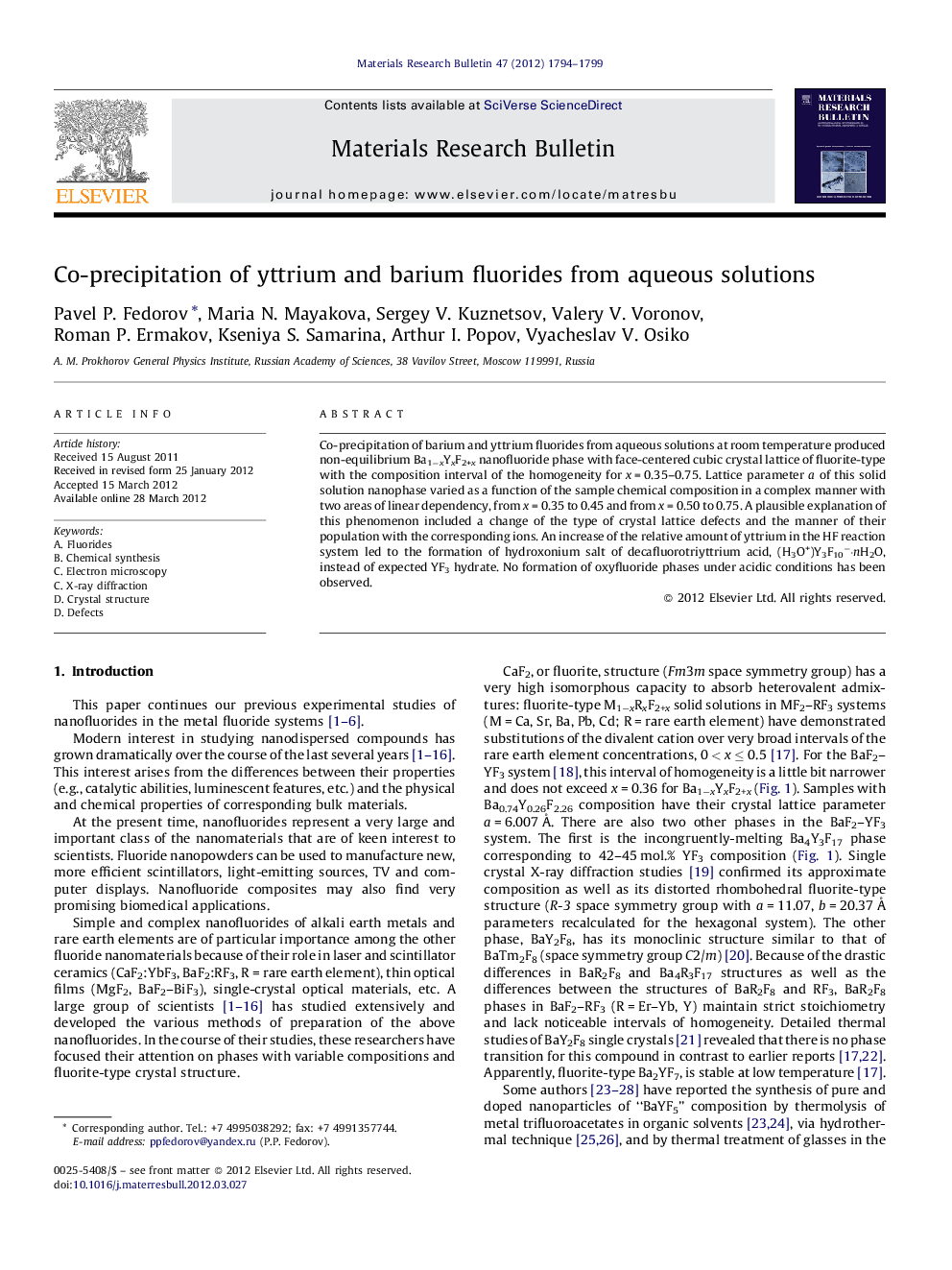| Article ID | Journal | Published Year | Pages | File Type |
|---|---|---|---|---|
| 1490197 | Materials Research Bulletin | 2012 | 6 Pages |
Co-precipitation of barium and yttrium fluorides from aqueous solutions at room temperature produced non-equilibrium Ba1−xYxF2+x nanofluoride phase with face-centered cubic crystal lattice of fluorite-type with the composition interval of the homogeneity for x = 0.35–0.75. Lattice parameter a of this solid solution nanophase varied as a function of the sample chemical composition in a complex manner with two areas of linear dependency, from x = 0.35 to 0.45 and from x = 0.50 to 0.75. A plausible explanation of this phenomenon included a change of the type of crystal lattice defects and the manner of their population with the corresponding ions. An increase of the relative amount of yttrium in the HF reaction system led to the formation of hydroxonium salt of decafluorotriyttrium acid, (H3O+)Y3F10−·nH2O, instead of expected YF3 hydrate. No formation of oxyfluoride phases under acidic conditions has been observed.
Graphical abstractFigure optionsDownload full-size imageDownload as PowerPoint slideHighlights► BaF2–YF3 system has been studied under the non-equilibrium ambient conditions. ► Ba1−xYxF2+x (x = 0.35–0.75) solid solution phase has cubic fluorite-type structure. ► Ba1−xYxF2+x cubic crystal lattice parameter a0 does not change monotonously. ► Different types of lattice defects determine a dependency from sample composition. ► (H3O+)Y3F10−·nH2O phase precipitates from HF aqueous solutions instead of YF3·nH2O.
